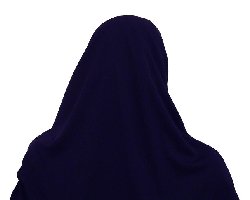Did Hijab Originate with Islam?
30/05/2012| IslamWeb
Some people claim that Hijab (Islamic covering) was introduced after the advent of Islam and that it did not exist in Arabia or outside of it before the call of Prophet Muhammad, ![]() .
.
Anyone who reads the Old Testament and the New Testament easily recognizes that the Hijab was known among the Hebrews since the time of Ibraaheem (Abraham), may Allah exalt his mention, throughout the eras of their Prophets, until after the advent of Christianity. There is repeated reference to the Hijab in many books of the Old and New Testaments.
· The Book of Genesis, [24:64, 65] says: “Rebekah also looked up and saw Isaac. She got down from her camel and asked the servant, "Who is that man in the field coming to meet us?" "He is my master," the servant answered. So she took her veil and covered herself.”
· The fifth song of the Songs of Solomon, a woman says: “Tell me, you whom I love, where you graze your flock and where you rest your sheep at midday. Why should I be like a veiled woman beside the flocks of your friends?”
· The Book of Isaiah [3:16-24] says:
16 The LORD says, "The women of Zion are haughty, walking along with outstretched necks, flirting with their eyes, tripping along with mincing steps, with ornaments jingling on their ankles.
17 Therefore the Lord will bring sores on the heads of the women of Zion; the Lord will make their scalps bald."
18 In that day the Lord will snatch away their finery: the bangles and headbands and crescent necklaces,
19 The earrings, the bracelets and veils,
20 The head dresses and ankle chains and sashes, the perfume bottles and charms,
21 The signet rings and nose rings,
22 The fine robes and the capes and cloaks, the purses
23 And mirrors, and the linen garments and tiaras and shawls.
24 Instead of fragrance there will be a stench; instead of a sash, a rope; instead of well dressed hair, baldness; instead of fine clothing, sackcloth: instead of beauty, branding.
25 Your men will fall by the sword, your warriors in battle.
17 Therefore the Lord will bring sores on the heads of the women of Zion; the Lord will make their scalps bald."
18 In that day the Lord will snatch away their finery: the bangles and headbands and crescent necklaces,
19 The earrings, the bracelets and veils,
20 The head dresses and ankle chains and sashes, the perfume bottles and charms,
21 The signet rings and nose rings,
22 The fine robes and the capes and cloaks, the purses
23 And mirrors, and the linen garments and tiaras and shawls.
24 Instead of fragrance there will be a stench; instead of a sash, a rope; instead of well dressed hair, baldness; instead of fine clothing, sackcloth: instead of beauty, branding.
25 Your men will fall by the sword, your warriors in battle.
· The Book of Genesis says: “Then said Judah to Tamar his daughter in law, Remain a widow at thy father's house, till Shelah my son be grown: for he said, Lest peradventure he die also, as his brethren did. And Tamar went and dwelt in her father's house and she put her widow's garments off from her, and covered her with a veil, and wrapped herself…”
· In the First Epistle to the Corinthians, Paul the Apostle says that the veil honors women. Christian women used to veil their faces when meeting strangers and take it off when they were in their homes wearing mourning clothes.
Therefore, religious scriptures of the Jews and Christians (which preceded the noble Quran) mention the veil and headdresses.
The Romans used to enact laws that forbade women two hundred years before Jesus, may Allah exalt his mention, not to appear with their adornment on roads. Lex Oppia was a law that forbade women to exaggerate in adornment even inside their houses.
Concerning the pre-Islamic era, the reports of Arab women adhering to Hijab are just as numerous as reports of women unveiling. In fact, the violation of women’s concealment was the reason behind the second day of the first war of Fijaar. Some young men from Quraysh and Banu Kinaanah saw a beautiful woman from Banu ‘Aamir in the 'Ukaath Market. They asked her to unveil her face, but she refused. Therefore, one of them humiliated her and she sought help from her people. Pre-Islamic poetry frequently refers to the Hijab of Arab women.
www.islamweb.net

